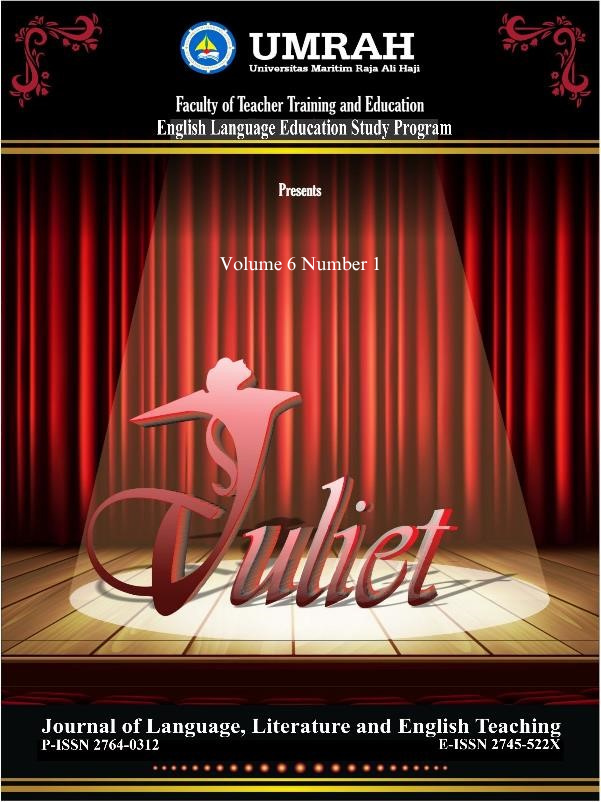Integrating Mobile Assisted Language Learning (MALL) in English Courses for Vocational Students at Politeknik Negeri Bengkalis: Insights into Benefits and Barriers
DOI:
https://doi.org/10.31629/juliet.v6i2.7612Keywords:
Mobile Assisted Language Learning (MALL); vocational students; English learnersAbstract
This study explores vocational students’ perceptions of Mobile Assisted Language Learning (MALL) in English courses using a mixed-methods design, with data collected from questionnaires completed by 48 students and semi-structured interviews with 12 students and 3 lecturers. The quantitative results indicated favorable attitudes toward the use of mobile technologies, with perceived usefulness achieving the highest mean score (M = 4.21, SD = 0.54), as 85% of respondents agreed that MALL made English lessons more practical and relevant to professional contexts. Motivation was also positively rated (M = 4.05, SD = 0.61), with 78% acknowledging that mobile applications increased their engagement and interest, while learning outcomes (M = 4.08, SD = 0.59) were seen as beneficial in enhancing vocabulary, pronunciation, and communication skills. Accessibility received moderately favorable ratings (M = 3.92, SD = 0.73), reflecting both the advantage of flexible learning and challenges related to unstable internet connections and limited device storage. Qualitative findings reinforced these insights, revealing five central themes: increased engagement and learner autonomy fostered by interactive features, development of communication skills through authentic workplace-like practices, technological limitations such as connectivity issues and unequal device access, differences in digital literacy that highlighted the need for training, and the importance of institutional and pedagogical support to ensure sustainability. Overall, the study concludes that MALL is perceived as an effective and relevant approach to English learning in vocational contexts, as it promotes autonomy, motivation, and skill development. However, for MALL to be fully effective, it is essential to address technological barriers, strengthen students’ digital competence, and provide continuous institutional and pedagogical support to integrate it as an essential component of vocational English education.
References
Bertagnolli, C. (2011). Delle vicende dell’agricoltura in Italia; studio e note di C. Bertagnolli. Delle Vicende Dell’agricoltura in Italia; Studio e Note Di C. Bertagnolli., 13(3), 319–340. https://doi.org/10.5962/bhl.title.33621
Cavus, N., & Ibrahim, D. (2017). Learning English using children’s stories in mobile devices. British Journal of Educational Technology, 48(2), 625–641. https://doi.org/10.1111/bjet.12427
Deci, E. L., & Ryan, R. M. (2000). Kk Verildi Dışşsal Ing Kaynak. Psychological Inquiry, 11(4), 227–268. https://doi.org/10.1207/S15327965PLI1104
Godwin-Jones, R. (2017). Smartphones and language learning. Language Learning and Technology, 21(2), 3–17.
Hes, J. P., & Reider, I. (1985). Computerized tomography in psychiatry. Harefuah, 108(3–4), 101–103. https://doi.org/10.3928/0048-5713-19850401-09
Kearney, M., Schuck, S., Burden, K., & Aubusson, P. (2012). Viewing mobile learning from a pedagogical perspective. Research in Learning Technology, 20(1), 14406.
Kukulska-Hulme, A., & Shield, L. (2008). An overview of mobile assisted language learning: From content delivery to supported collaboration and interaction. ReCALL, 20(3), 271–289.
Stockwell, G., & Hubbard, P. (2013). Some Emerging Principles for Mobile-assisted Language Learning. The International Research Foundation for English Language Education, 2013, 1–15.
Teräs, M. (2022). Education and technology: Key issues and debates. International Review of Education, 68(4), 635–636.
Downloads
Published
Issue
Section
License
Copyright (c) 2025 DESI WAHANA

This work is licensed under a Creative Commons Attribution 4.0 International License.





